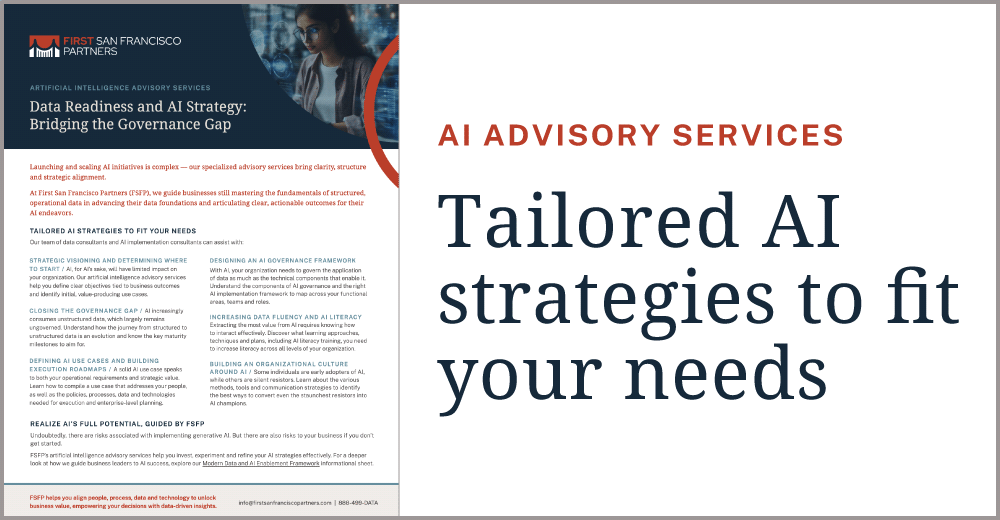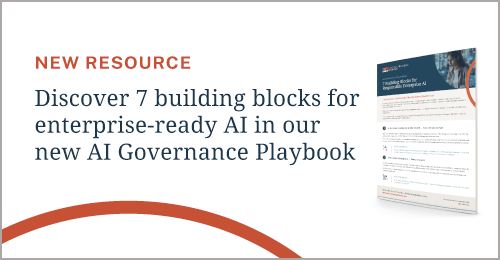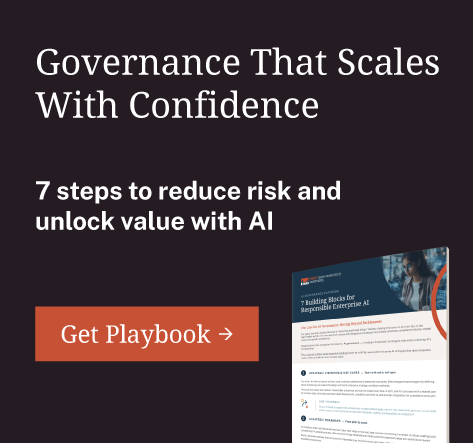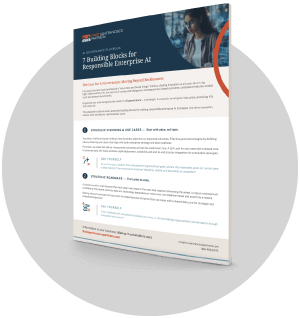I recently spoke at Enterprise Data Governance Online (EDGO) about frameworks that establish data governance as an enterprise service, similar to how Human Resources and Finance function.
I’m sharing some of my remarks here with you. If you’d like a recording of my full presentation, you may sign up at DATAVERSITY.
Data Governance as a Service
Data governance strives to ensure companies have access to reliable, quality data to operate efficiently and inform their decision-making.
When a governance function is aligned with other enterprise-wide functions, such as in Human Resources where that area creates policies and practices for managers and employees to follow, the Data Governance area will be more effective when it's similarly positioned as a service. In doing so, governance becomes more deeply ingrained in an organization’s key processes, mindset and culture, becoming much more than a practice area.
Integrating Governance at the Process Level
When we consider how governance can become fully embedded into an organization, the focus should include its integration with existing processes, such as how data is acquired or how projects are executed.
A typical project execution process, especially one involving technology, begins with functional and technical requirements. But when we fully consider all aspects of a project, we reframe the process to also consider requirements from a data point of view.
A data-centric development process calls out data as a unique piece of a project. If you begin with data and information requirements (alongside functional and technical requirements), you can use the information requirements to help with project design.
You might need to do discovery and profiling first to make sure that, as you address those requirements and create the design, you verify and validate where data is located, what it looks like and what it represents in your organization. By doing this, you can more accurately create a source-to-target mapping and the data design needed to support the project — and then you can move into development, quality assurance and production knowing the data meets the business' need.
The important thing about pulling forward information requirements and treating data as a unique component of a project is to ensure you identify data issues early and that you don't wait until the QA process to see those data issues.
Aligning Governance for Data Acquisition
Governing internal data can consume an organization’s focus. External data that’s brought in needs governance, too, along with oversight of the processes for acquiring the data.
As companies explore how to derive more from their analytics, many look to external data to enhance their understanding of, for example, customers and their purchase patterns.
Because data acquisition is often treated as a simple purchase, it may be done in a siloed way where each area of the organization buys its own data. This can create inconsistencies across the rest of the business when multiple groups end up buying the same or similar data — and sometimes from the same vendor!
Governance processes should encompass the activities of everyone in the organization who is involved in data acquisition, bringing the buyers and their information needs together in a more thoughtful way, while increasing the organization’s understanding of the acquired data and its metadata.
Additionally, when governance practices are applied to data acquisition, it helps mitigate risk and privacy concerns and ensures the data’s purpose-driven usage and not only its path into the data lake.
Agile Approach to Governance
With today’s demands for more and more data, wherever it can be acquired, the question for many data-driven organizations is, how can I access as much data as possible? The answer: Explore the benefits of an agile approach to data governance.
Agile governance enables data creators and users to participate in governance activities, simultaneously empowering them and expecting their contributions to the corpus of knowledge about the data to improve data literacy across the organization. An agile framework encourages users to follow guidelines made available to them at the point they’re needed, rather than requiring them to seek out already communicated procedures stored away in a content management system.
Agile governance incorporates the best parts of traditional, established operating models but shifts the focus to providing the support that empowers individuals to collaborate more — and ultimately get more value from data, too!
Interested in Learning More?
I enjoy being part of EDGO each year and encourage you to explore each topic from the 2021 event; sessions included:
- Frameworks to Establish Data Governance as an Enterprise Service
- A Roadmap to Data Quality Success
- Data Governance as Part of a Data Strategy
- Data Health — The Future of Data Governance
- Driving DG Impact with Metadata Governance and Data Lineage
- Measure What Matters: The Art and Science of Measuring the Success of Your Data Governance Program
Array




